Remember 90s décor? 19 archive pictures that sum up home life in the nineties
Take a trip back to the cool 1990s
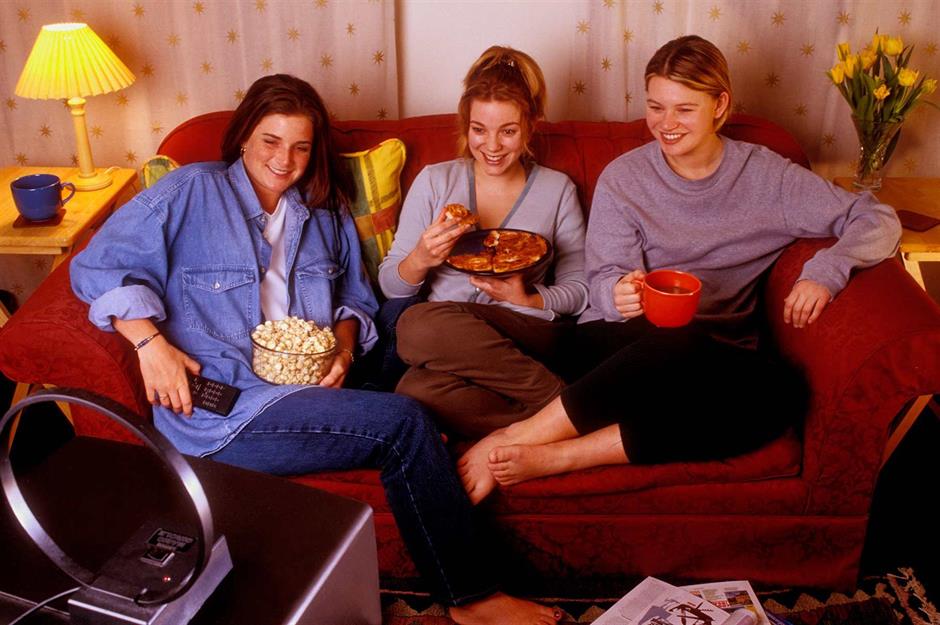
The dawn of the internet, the era of the supermodel, and the decade that gave us the Spice Girls, Oasis and Friends; the 1990s are often looked back on with fondness.
Interior design had a huge variety of fresh styles and trends, from the new wave of zen-inspired minimalism to homespun cosy styles and a newfound globalism that brought colour and textures together from cultures across the world.
Click or scroll to take a trip down memory lane and discover real archive photos of interior decor from the 1990s...
Cosy country corners
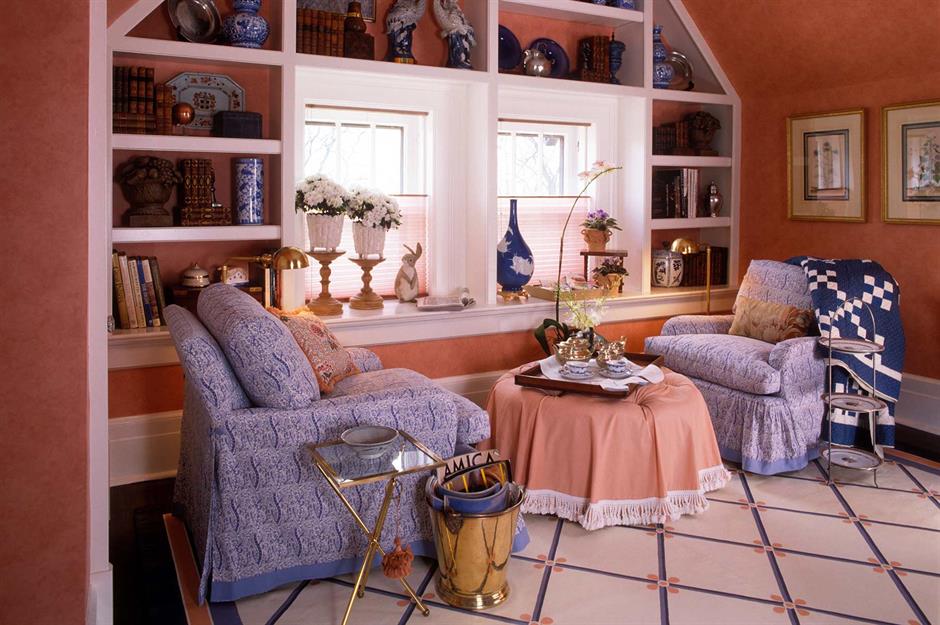
Soft terracotta walls, patterned slipcovers, and skirted armchairs were staples of 1990s décor, echoing a taste for homely tradition with a slightly formal twist.
Country-style living was hugely popular, inspired by interiors magazines and TV makeover shows, and homeowners embraced layered fabrics and floral accents to give spaces warmth.
Armchairs with skirts were especially fashionable, hiding legs and adding what was thought of as a luxurious touch. It was a look that blended comfort with convention, ideal for afternoon tea or family chats.
Patchwork and painted charm
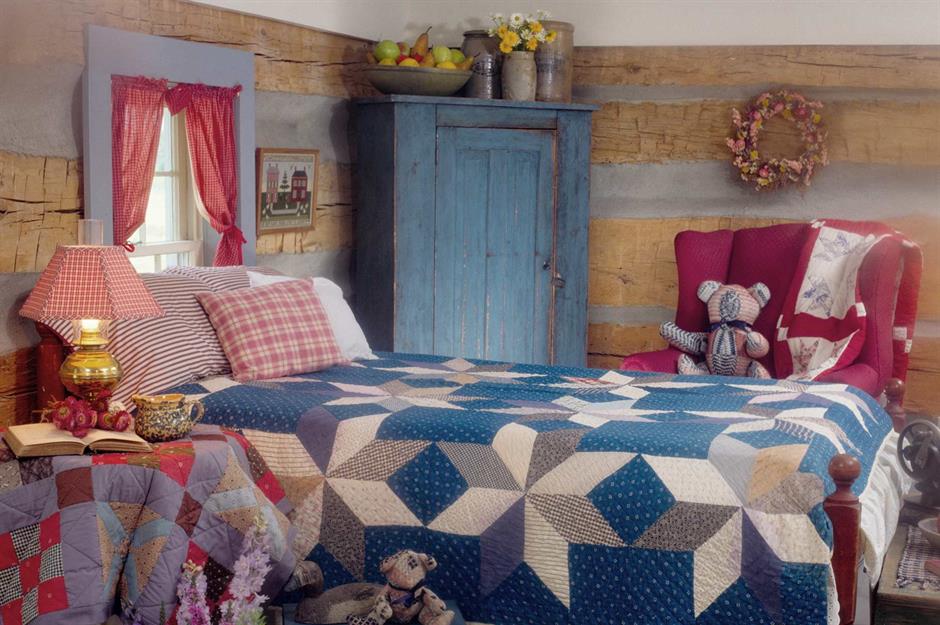
Patchwork quilts and gingham fabrics were everywhere in the 1990s, part of a wider revival of homely, handcrafted style. Bedrooms often layered checks, stripes, and florals for a rustic, cabin-like feel that was both nostalgic and comforting.
Painted furniture in bright blues and reds added to the country look, while handmade touches like teddy bears and dried flower wreaths reflected a DIY spirit popular at the time. It was an era when quilting circles thrived and craft fairs became weekend highlights.
Pretty in pink
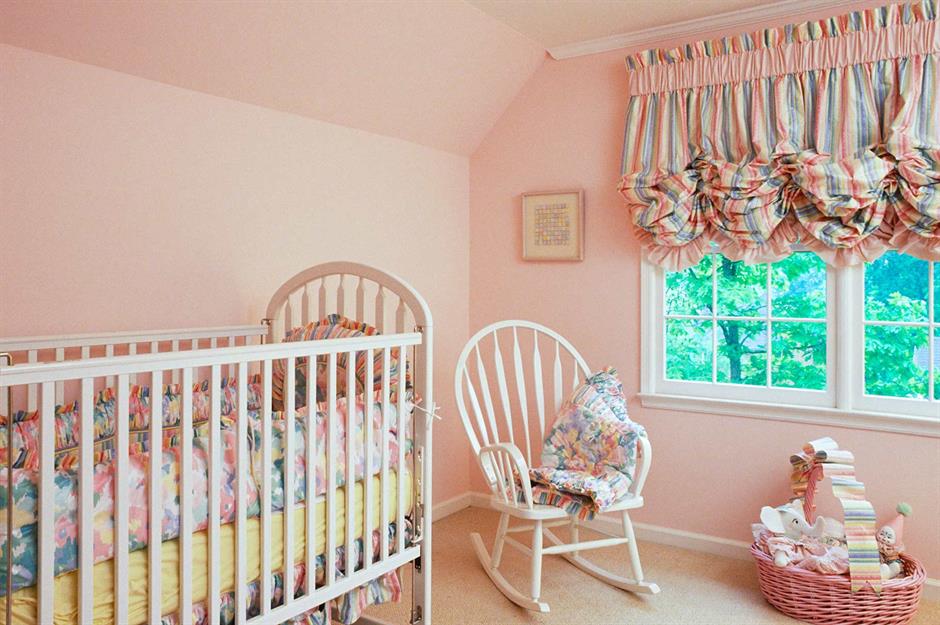
In the early 1990s, nursery décor often leaned heavily on ruffles, swags, and pastel tones, with pink reigning supreme for baby girls. Gender neutral nurseries were often painted yellow or cream.
Matching sets were big business, with bedding, curtains, and even baskets coordinated in floral or striped patterns. White-painted furniture completed the look, giving a soft, traditional feel.
Parenting magazines of the time promoted themed nurseries as a must-have, while baby boomers raising children in the 90s spent more on accessories than previous generations, making the nursery an increasingly styled space.
Sticky style statements
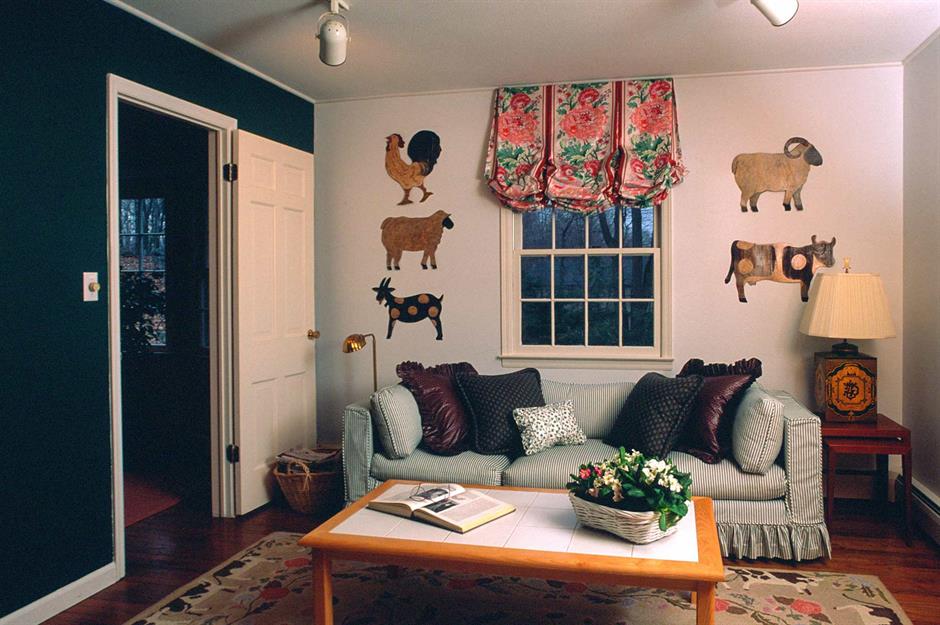
Wall decals became a playful way to decorate family rooms in the early 1990s, with country-style motifs like chickens, cows, and sheep adding a rustic touch. Balloon shades in bold florals, like the ones here, were also hugely fashionable, tying in with the decade’s love of layered fabrics.
These homely spaces often mixed traditional furnishings with whimsical details, reflecting a time when interiors leaned towards comfort and charm.
For many households, it was about creating a cosy setting for family life and downtime.
Lightening up the heart of the home

Pale honey-toned cabinets were a hallmark of 1990s kitchens, offering a lighter, more open look than the darker woods of the 1980s. Gold-finish handles, tiled countertops and decorative plates added a touch of polish, while breakfast bars became increasingly popular for casual dining and family life.
Many kitchens of the decade featured double sinks, reflecting how homes were adapting to larger households and more entertaining. This airy, welcoming style mirrored the era’s shift towards kitchens as multifunctional spaces for cooking, eating, and gathering.
Loft living style
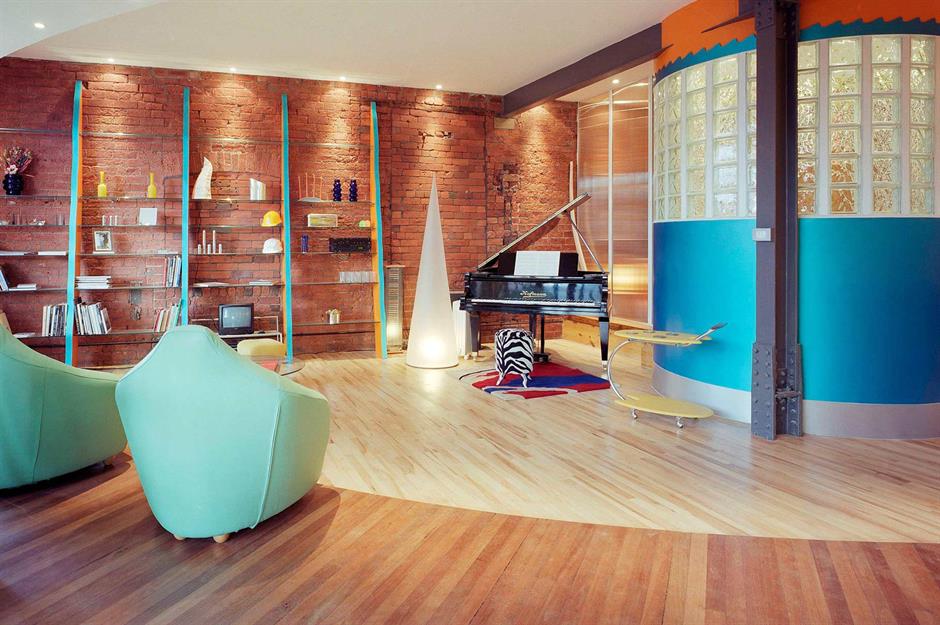
By the late 1990s, industrial conversions were the height of cool, with disused mills and warehouses turned into modern apartments. Exposed brick, glass block walls, and open-plan layouts gave homes a raw yet stylish edge.
Bold colours like turquoise and orange, paired with statement pieces such as cone lamps and zebra-print stools, reflected the decade’s love of graphic design and eclectic flair.
With rising interest in city living, loft-style spaces became synonymous with urban chic, inspiring interiors magazines and glossy property features.
Minimalist mood
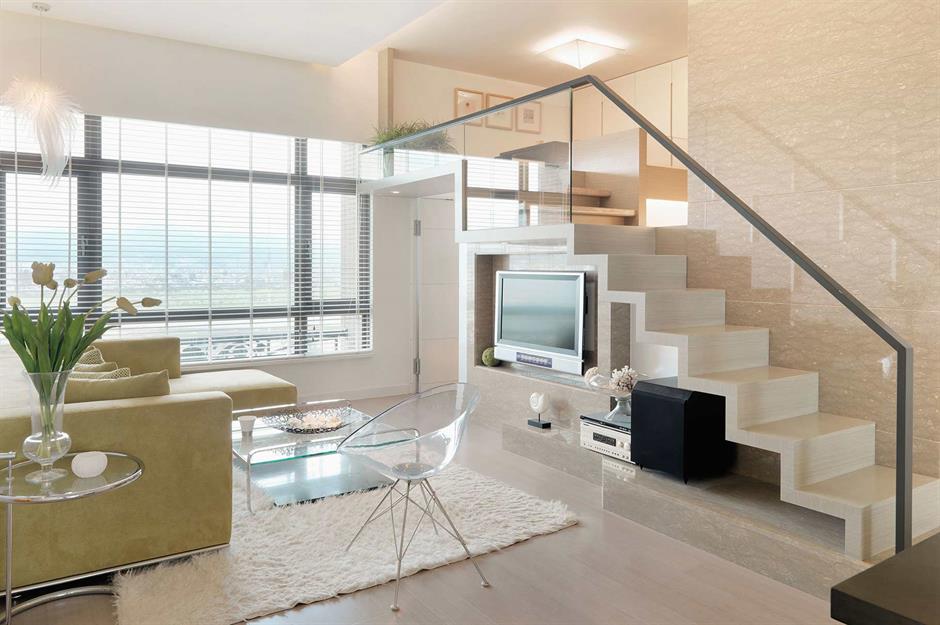
By the mid to late 1990s, minimalism had crept into Western homes, influenced by Japanese Zen design and glossy interiors magazines. Clean lines, pale tones and glass furniture created a calm, uncluttered look, contrasting with the chintz-heavy styles earlier in the decade.
Technology was increasingly built in, with televisions and stereos streamlined into living spaces rather than dominating them.
Transparent chairs, shaggy rugs and modular sofas reflected a growing appetite for sleek modernism, while open-plan layouts echoed a desire for airy, stress-free living.
Floral overload
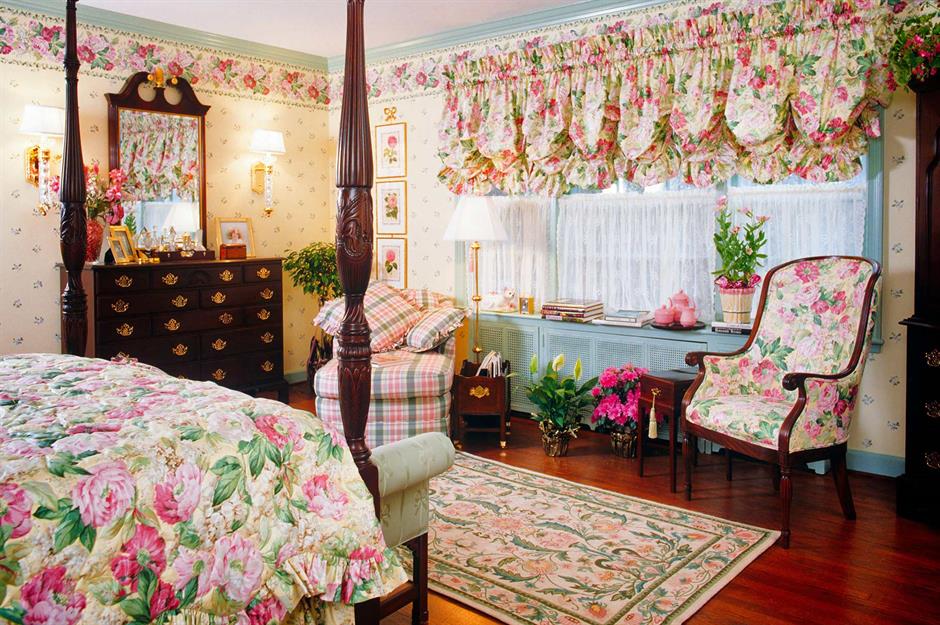
Even as minimalism was gaining ground, floral chintz held strong in many 1990s homes. Bedrooms like this layered bold flower prints across bedspreads, curtains, upholstery, and wallpaper borders for a full-on romantic look.
Four-poster beds and dark polished wood added to the sense of tradition, echoing styles that had been popular since the 1980s.
This was also the era of coordinating everything, from rugs to lampshades, as homemakers still loved a matchy-matchy approach before pared-back, cleaner lines began to dominate interiors later in the decade.
Dial-up days at home
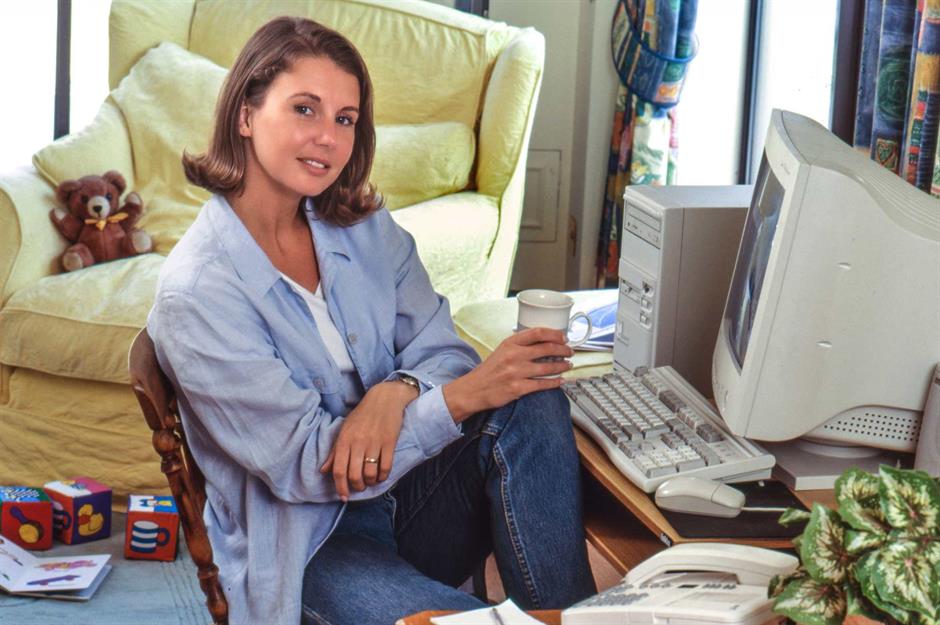
In the 1990s, bulky desktop computers began creeping into family living rooms, often perched on makeshift desks alongside fax machines and corded landlines.
Internet access was slow, reliant on dial-up modems that tied up the household phone line, meaning families or flatmates had to take turns getting online.
Homeworking was still a novelty, but more parents experimented with it as technology advanced. The sight of a tower PC and chunky monitor became a new domestic fixture, signalling the digital era’s arrival.
Home entertainment hubs
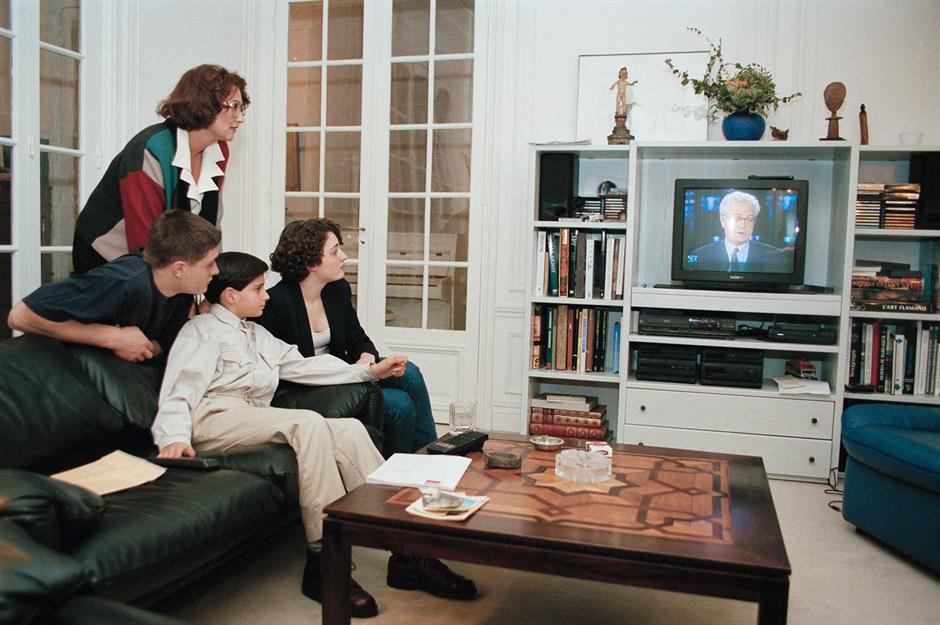
In the 1990s, the living room became the centre of family entertainment, with televisions, VHS players, and stereo systems often housed together in large shelving units.
Collections of tapes, CDs and books filled the gaps, reflecting how media was consumed before streaming. Families gathered to watch the evening news or favourite shows, sometimes recording programmes on tape to replay later.
From the debut of Friends in 1995 and unmissable episodes of The X-Files to witnessing world events like the Gulf War or Princess Diana’s funeral, TV time was a shared ritual.
Cottagecore before its time
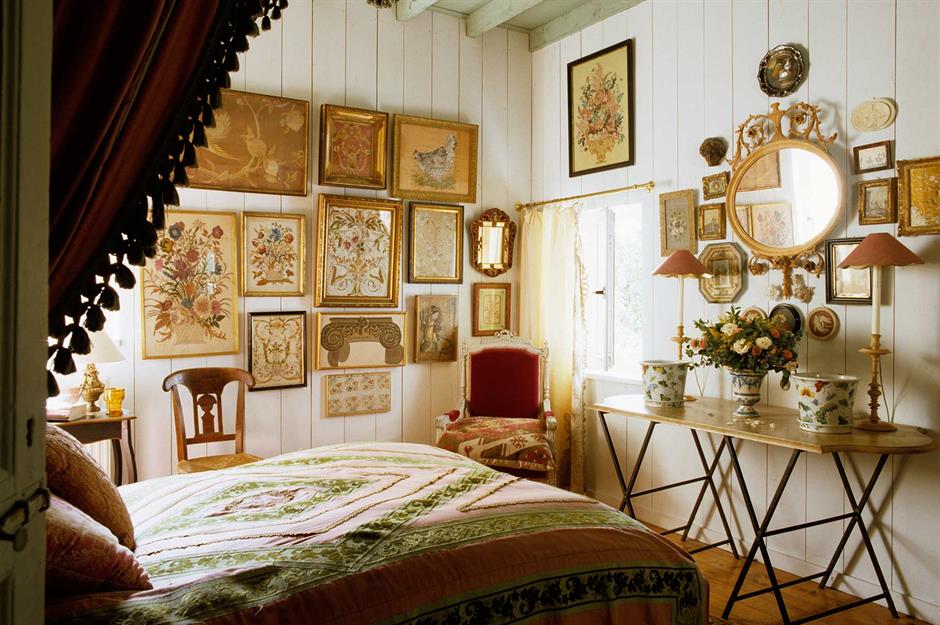
In the early 1990s, many bedrooms embraced a nostalgic, old-world feel with wood panelling, quilted bedcovers, and embroidered tapestries. Gallery walls, filled with framed florals and antique-style prints, echoed the look of country estates and stately homes, bringing a touch of European charm to everyday houses.
Crafts such as embroidery, tapestry, and flower pressing were still popular hobbies, their results proudly displayed. This layered, romantic style foreshadowed what we now call “cottagecore”, blending traditional craft with a longing for rural simplicity.
Far-out flatshares
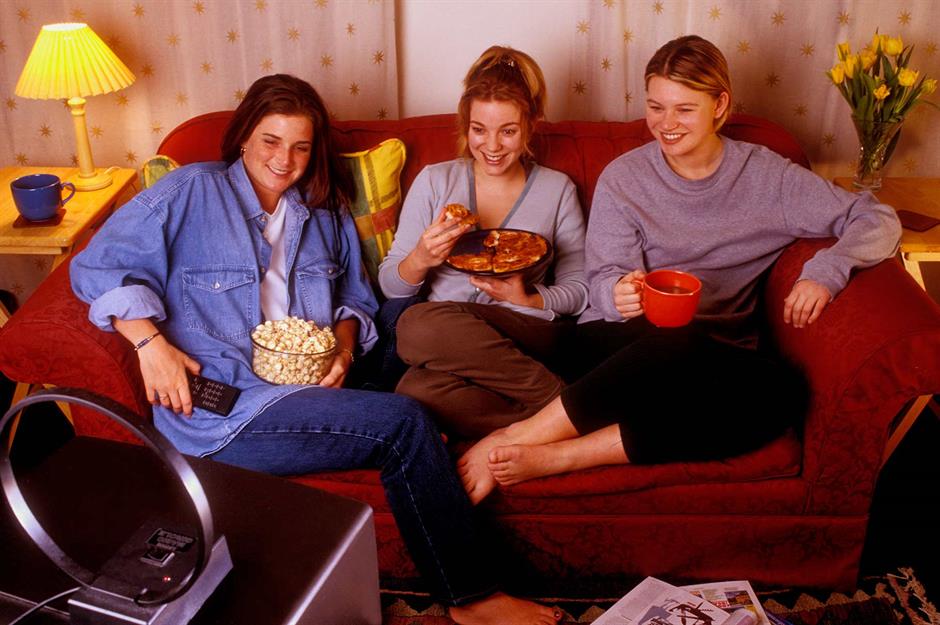
Sharing flats and apartments was a rite of passage for many young adults in the 1990s, and their interiors often reflected a mix of fun trends, with thrifted furniture and affordable statement buys sitting happily side-by-side.
Celestial prints with suns, moons, and stars were a verified 90s decorating craze, seen on curtains, bedding, and even crockery.
Portable TVs became the hub of shared spaces, with flatmates crowding onto second-hand sofas for box sets on VHS. For a generation coming of age, renting with friends was as much about style as it was about independence.
Family time in the kitchen
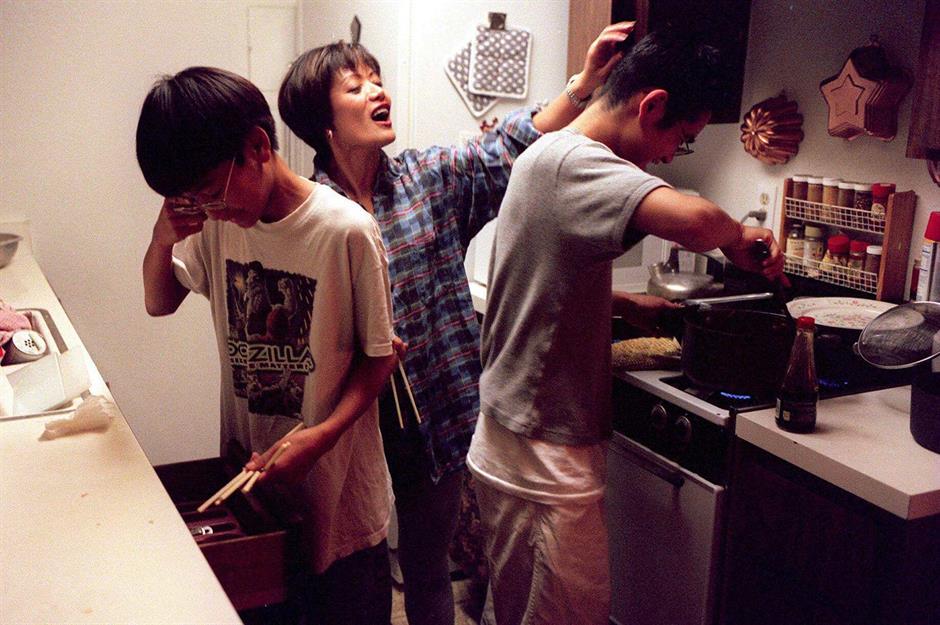
For many households in the 1990s, kitchens were small but lively spaces where families squeezed in together to cook, chat, and share the day. Spice racks, copper moulds, and dark wood cabinets were typical features, giving a homely yet practical feel.
As more parents worked outside the home, weeknight dinners were often quick and shared between family members, while weekends meant leisure activities.
Cooking together reflected how kitchens were becoming social hubs, balancing tradition with the busy routines of modern family life.
Decorating for a dinner party
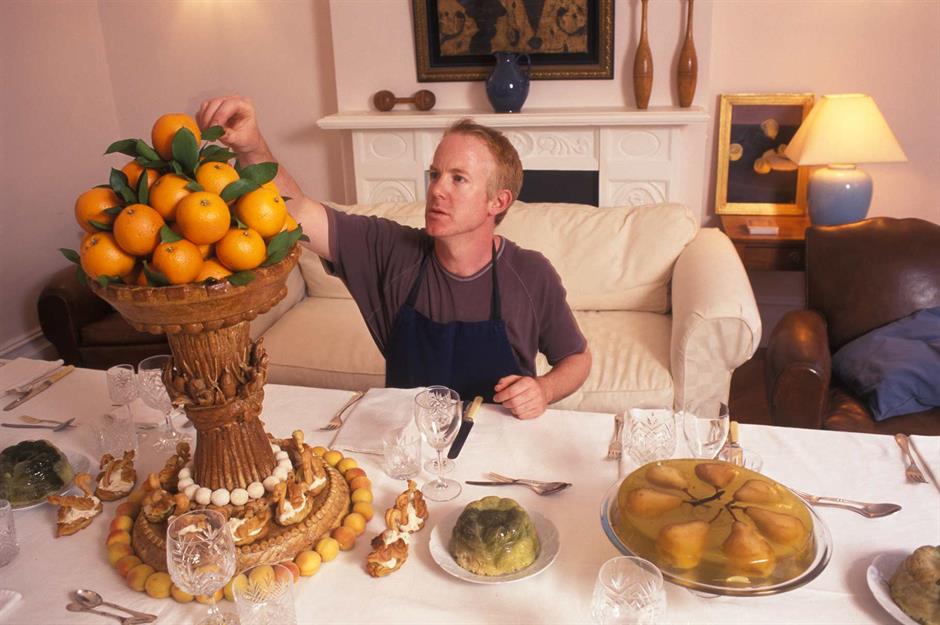
Hosting dinner parties was a big part of 1990s social life, with friends and family gathering around extending tables for home-cooked feasts. Elaborate centrepieces, like this pastry-and-orange creation, reflected a love of showing off culinary flair.
Intricate presentation, elegant tableware, and challenging dishes echoed the influence of aspirational cookbooks, with TV chefs such as Bobby Flay and Delia Smith encouraging people to entertain at home.
While not always practical, these displays captured the spirit of the decade, when dining in could feel as stylish as dining out.
Spa-style luxury
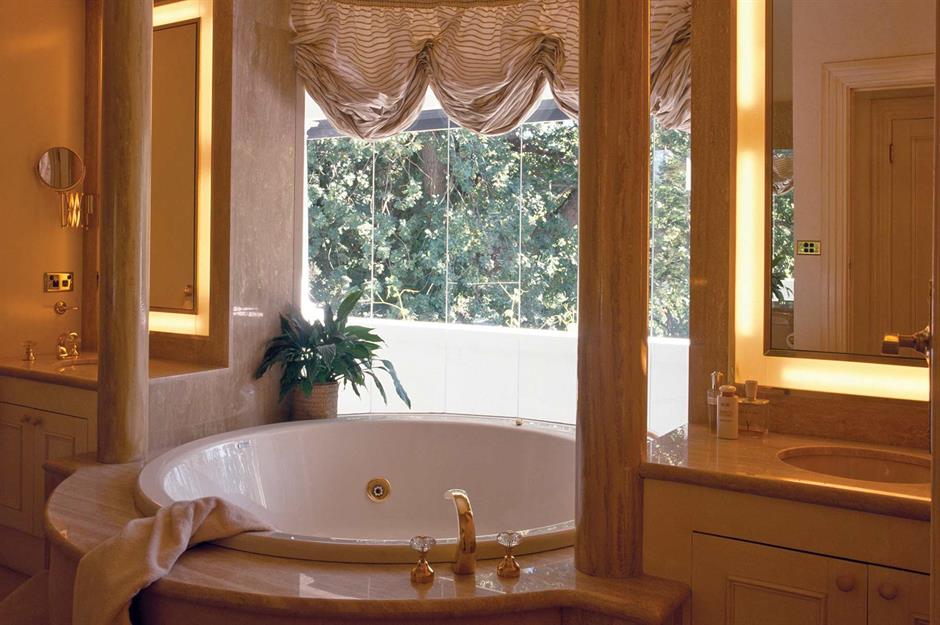
Bathrooms of the 1990s often borrowed from hotel design, with round Jacuzzi tubs, marble surrounds, and gold fittings bringing a touch of glamour to everyday routines.
Illuminated mirrors and decorative columns added to the sense of indulgence, while festoon blinds softened the look with fabric frills. Inspired by the era’s obsession with spa culture and self-care, these bathrooms were about more than function.
They symbolised leisure and aspiration, reflecting how homeowners embraced the idea of pampering spaces within the home.
Industrial edge
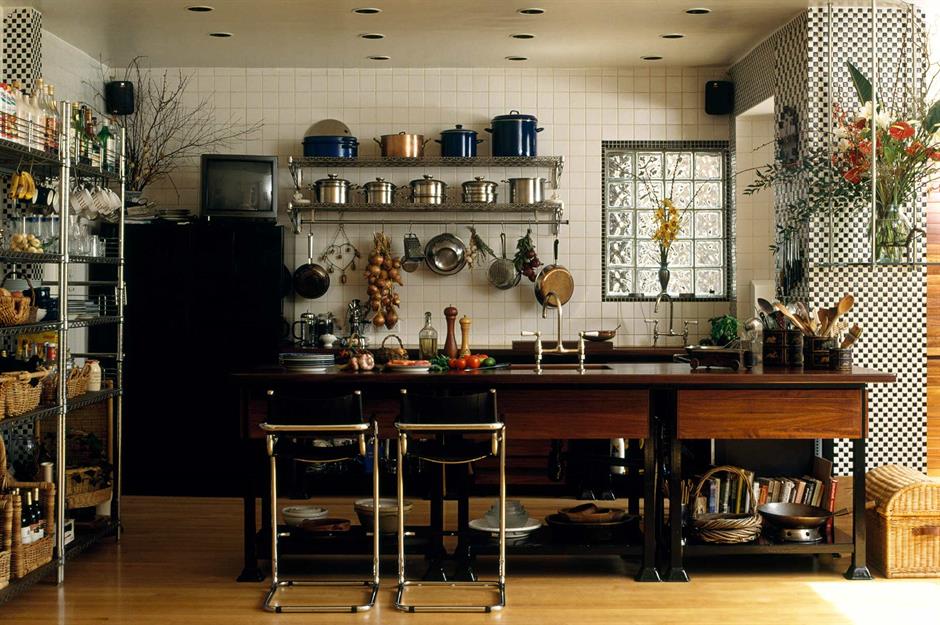
The 1990s saw kitchens borrow heavily from professional cooking spaces, with stainless steel shelving, open pot racks and butcher-block style islands. Black-and-white chequerboard tiles, chrome stools, and dark wood surfaces gave a modern, high-end feel, while glass blocks added light and texture.
TVs and sound systems often crept into the kitchen too, reflecting how these rooms became social as well as practical. This industrial-inspired look echoed the rise of celebrity chefs and cookery shows, making kitchens feel like the heart of both food and lifestyle.
Knocking through
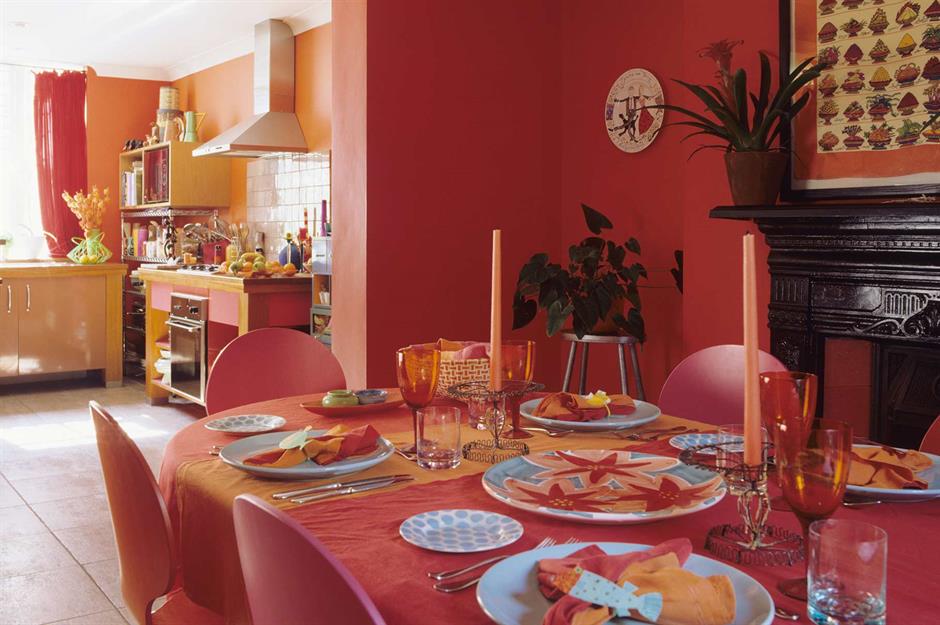
The late 1990s brought a rush of bold home makeover shows like Changing Rooms and, later, the US show Trading Spaces, inspiring people to embrace adventurous palettes. Open-plan living was gaining ground too, with walls knocked through to create brighter, more sociable spaces.
This dining room and kitchen show off fiery reds and oranges, softened with playful patterned plates and pops of greenery.
It reflects the shift from neutral minimalism to expressive, personality-led decorating, where colour blocking, coordinated table settings, and statement walls turned homes into canvases for self-expression.
Family games night
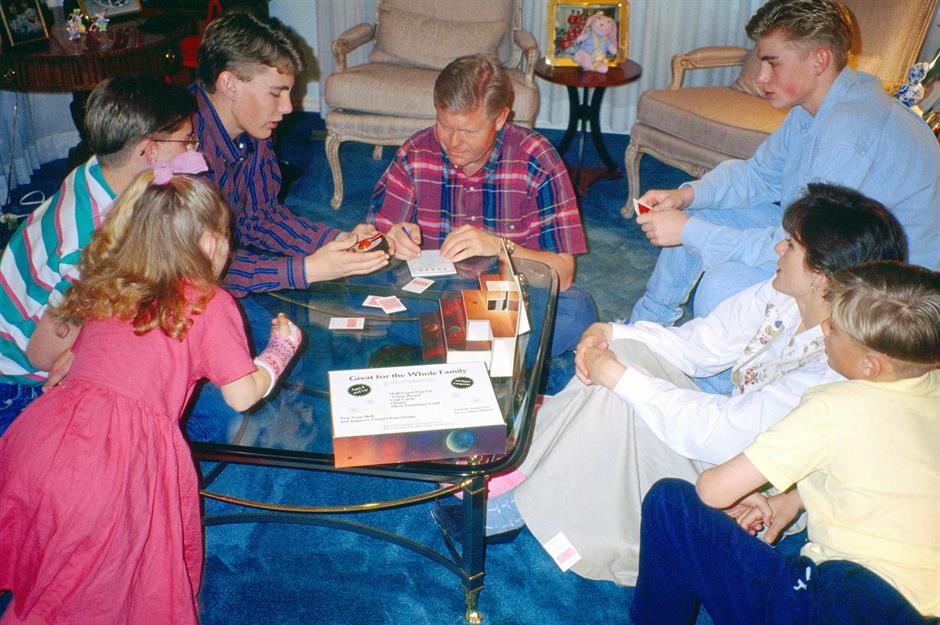
Before smartphones and streaming, evenings at home often revolved around board games, trivia challenges, and family competitions. This Salt Lake City household captures the spirit of the 1990s, when families gathered in the living room to play together.
With fewer digital distractions, entertainment was about conversation, laughter and a bit of healthy rivalry. Popular choices included classics like Pictionary, Trivial Pursuit and Monopoly, while newer card and quiz-based games gave everyone a chance to join in.
Timeless porch life
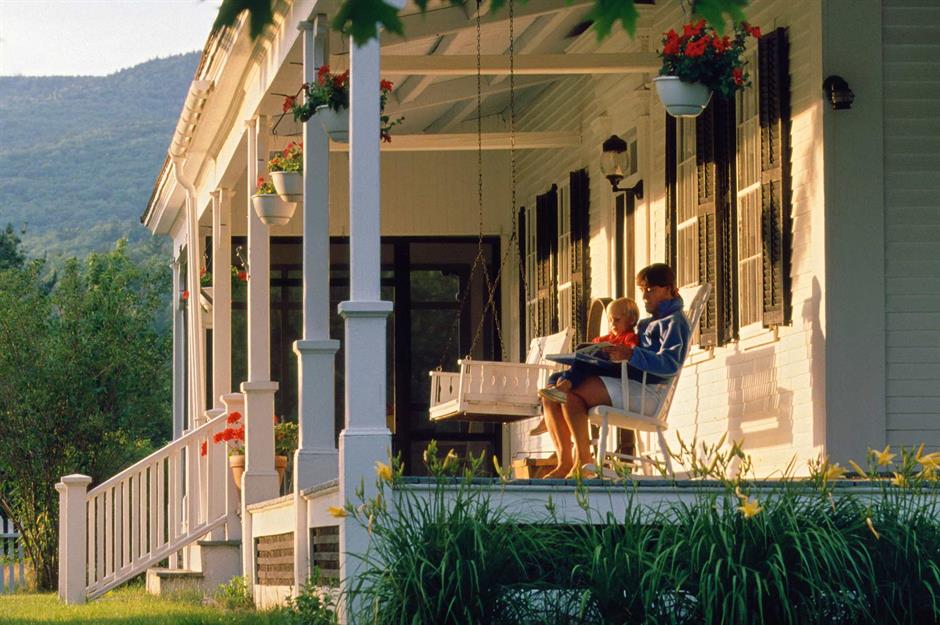
The porch remained a beloved feature of homes in the 1990s, when outdoor living was beginning to take on new trends. Families have always embraced porches and decks as places to relax, socialise and enjoy the fresh air, often decorated with rocking chairs, swings and planters filled with geraniums or trailing ivy.
In the decade that saw the rise of minimalist gardens, with modern steel sculptures and water features, a shady porch offered a quieter retreat, keeping alive a tradition of outdoor family life even as modern conveniences crept indoors.
Loved this? See more real homes through history
Comments
Be the first to comment
Do you want to comment on this article? You need to be signed in for this feature